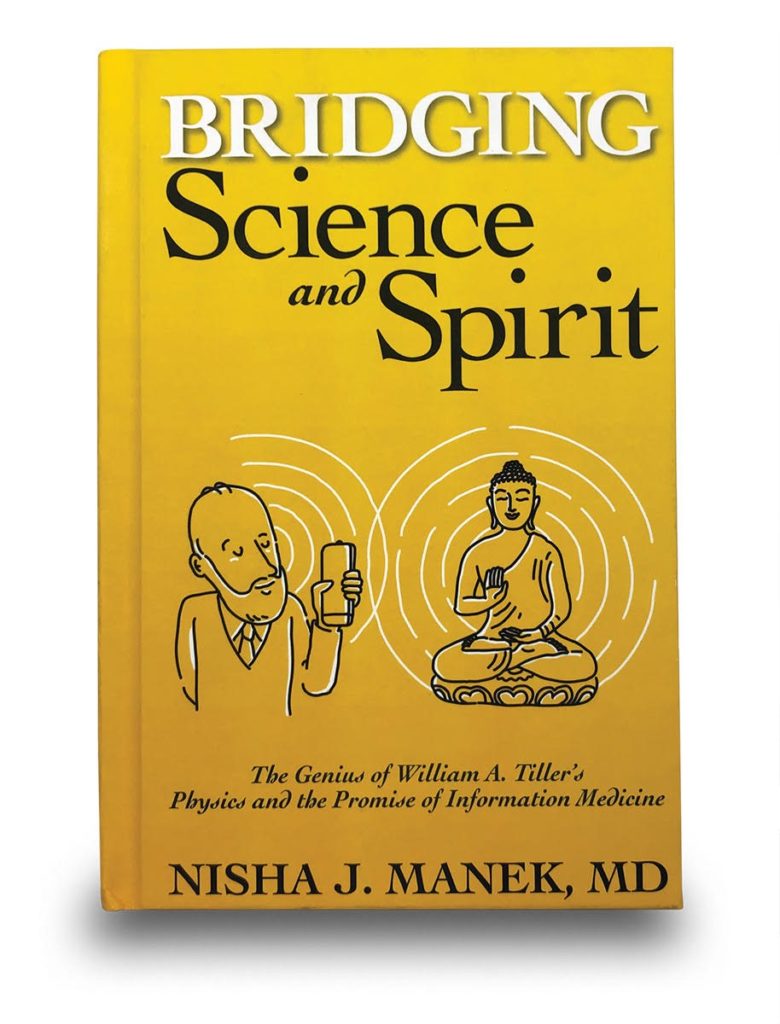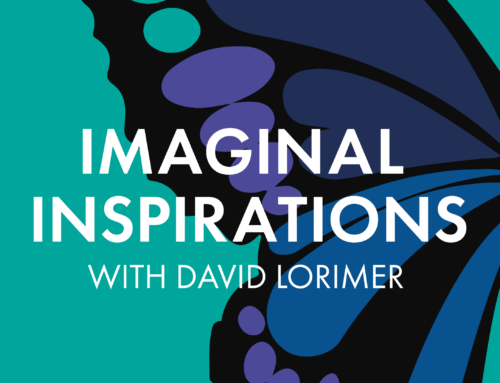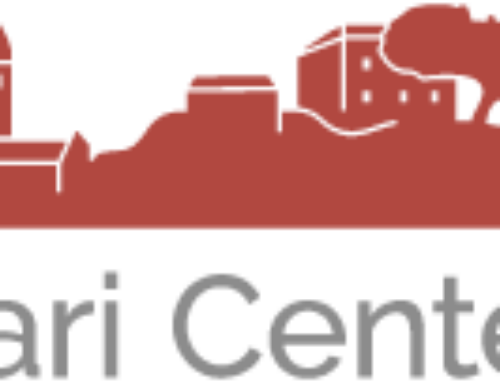Book review by David Lorimer
 BRIDGING SCIENCE AND SPIRIT
BRIDGING SCIENCE AND SPIRITDr Nisha Manek
Conscious Creation LLC, 2019, 437 pp., $18.99, p/b
ISBN: 978-1-950599-00-8
Although I had heard of Tiller’s work, I was unfamiliar with any detail until reading this excellent introductory book on his physics and information medicine. The author is a physician who has spent a lot of time with Bill Tiller and also in close study of his work on psychoenergetics. The book begins with a quote from Tiller that his work is designed to ‘help build a reliable bridge of understanding for humans that seamlessly joins the foundations of traditional science on one end, extends through the domains of the psyche, emotion, and mind and is firmly planted in the bedrock of Spirit at the other end.’ The book consists of seven pillars and 52 short chapters covering such areas as mind beyond brain and levels of being, thermodynamics, entropy and information, experiments on human intention, space and light, subtle energy and information medicine, and the energy of love in evolving towards homo spiritus.
The ‘bridges of understanding’ constitute general unifying principles emerging from detailed observations leading to greater understanding and coherence. In terms of health, the proposition is that humans are not just chemistry, but rather a mix of energy, information and Spirit (the text is supplemented with helpful illustrative cartoons). Psychoenergetic phenomena include distant healing, telepathy, spoon bending, remote viewing, mind/machine interaction and psychokinesis, all of which will be familiar to most readers of this journal and beyond the frame of reference of conventional neuroscience that restricts consciousness to the brain. The author suggests that ‘looking for physical explanations of consciousness is like attacking a piano with a sledgehammer to get at the concerto imprisoned inside.’ (p. 90) The brain is more like a user interface where the conscious mind imparts meaning to information. The author also draws on David Hawkins to suggest that consciousness is a continuum of levels – interestingly, Tiller’s book Psychoenergetic Science tested at a level beyond the intellect into the realm of the heart – Tiller does not divide these in himself.
A basic contention is that the intention is a process of conscious creation – with which we are all immediately familiar. For Tiller, science is a verb not a noun, an activity and means of enquiry that performs useful work whereby ‘work means [that] consciousness via intention must be a source of energy’ – a key contention in terms of energy and thermodynamics lies in the work of Shannon demonstrating that information is as important as energy and matter, while the observer is inextricably linked to the system. This leads to an innovative formulation whereby there is a form of Gibbs free energy G that can be ascribed to mind, emotion, consciousness and intention. This represents an inside-out science where the protocol begins with a powerful intention statement that is experimentally applied to water; the protocol includes a physically written intention, visualisation, writing equations and the affirmation ‘Thy will be done’.
The experimental question is whether such an intention can be stably imprinted on an external device, which Tiller calls the Intention Host Device or IHD. Alongside which he set up a control unimprinted electronic device (UED) – the intention was to change the pH of the water sample. However, he found a case of ‘macroscopic information entanglement’ whereby the water in the UED was also transformed! After two months, the pH of the water had decreased by one unit in accordance with the stated intention – rather a staggering result. This led him to postulate that human intention can affect empty space, which seems to be related to a DC magnetic field polarity effect (p. 208). Here he distinguishes between the familiar four-dimensional world of matter governed by electromagnetism and the gravity as ‘direct space’ (D-space) and a second dimension that has magnetic wave information characteristics but not material stuff, which he calls reciprocal space or ‘R-space’. He also defines a mathematical relationship between these two spaces with Fourier transform geometry whereby ‘the R-space’s pilot waves guide D-space particles and matters such as electrons, parallel to the ideas developed by Dirac and de Broglie with the difference that these waves are superluminal and magnetic. Hence, the virtual R-space is a high-resolution blueprint of information overlaying our world.’ (p. 219) The R-space ‘is the medium whereby the information is transferred’ and entails information entanglement through what he calls ‘deltrons’. Insofar as I understand the technical details, this seems to me a major theoretical advance, highly relevant to parapsychology.
We humans are capable of field effects, for instance using the power of intention and emotion in the imprinting process. Here there is an interesting theoretical example where a man succeeds in conditioning the space of his garage so that he manages to create an over-unity energy machine. However, independent replication fails because of the different quality of R-space partly conditioned by emotion in the original space. This seems like a form of experimenter effect. This also provides a context for distant healing as well as higher energy systems present within the physical body, pointing in the direction of the future information medicine at different levels. The author proposes that chemical medicine sits in D-space, energy medicine in a combination of D- and R-space while information medicine is exclusively in R-space and informed by Spirit, effectively representing Universal Mind. This leads to a fascinating comparison between the field effects of relics and a Tiller IHD in terms of capacity for conditioning space leading to an experiment whereby the IHD energy information is successfully transferred to the UED (p. 291), ‘a reduction in entropy by the loving-kindness information.
We arrive at a conclusion that science is a path to self-knowledge and that ‘Science and Spirit are a necessary unity.’ At the time of writing, people are coming together to meditate whereby we create a field ‘raising the symmetry of space’ and creating an atmosphere that is coherent and palpable in sacred places. In the case of advanced saints and sages like Padre Pio, this may even result in the physical body becoming incorruptible, somehow transforming the very matter normally subject to entropic decay. All this gives pause for thought, while the book as a whole points way beyond our current conceptual limits.


